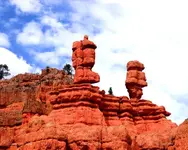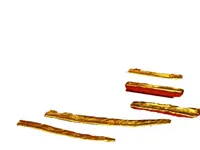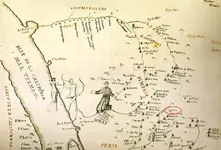Frankn
Gold Member
This Jesuit treasure thing is running hot and cold. I have just read two books on this. The first was IN SEARCH OF THE SPANISH TRAIL SANTA FE TO LOS, 1829-1848.
It is by Crampton & Masden. It has good maps and photos and leans toward the view that the trail is newer than some suspect, in fact that it was mainly a trade route.
The thing is I then read LOST TREASURERS ON THE OLD SPANISH TRAIL by Thompson. WOW, this is like night and day. The second book brings out facts that I never heard before. It has documentation, even lists major Spanish explorations/expeditions from 1492-1503(yes Columbus hit the coast of Mexico) to 1847 (Mormons). Yea, they slipped in some non Spanish! It basically shows the use and extension of the trail.
The Jesuit removal started on June of 1767. Within 24 hours all the Jesuits in Mexico were rounded up and taken to Veracuse with only the clothes on there backs and there bibles for deportation. Now here's where the kicker comes in. It took weeks, or even longer for the kings soldiers to reach the far out missions. One Jesuit even tried to ship out his wealth on the ship Dromio, but it was intercepted and the king had him beheaded. I think most have hunted for the two Tumacacori missions. One on each side of the Sana Cruz River. One is known, but the way bill shows great wealth in the mines which are located from the lost mission.
Hay, what can I say? Quien Sabe Frank

It is by Crampton & Masden. It has good maps and photos and leans toward the view that the trail is newer than some suspect, in fact that it was mainly a trade route.
The thing is I then read LOST TREASURERS ON THE OLD SPANISH TRAIL by Thompson. WOW, this is like night and day. The second book brings out facts that I never heard before. It has documentation, even lists major Spanish explorations/expeditions from 1492-1503(yes Columbus hit the coast of Mexico) to 1847 (Mormons). Yea, they slipped in some non Spanish! It basically shows the use and extension of the trail.
The Jesuit removal started on June of 1767. Within 24 hours all the Jesuits in Mexico were rounded up and taken to Veracuse with only the clothes on there backs and there bibles for deportation. Now here's where the kicker comes in. It took weeks, or even longer for the kings soldiers to reach the far out missions. One Jesuit even tried to ship out his wealth on the ship Dromio, but it was intercepted and the king had him beheaded. I think most have hunted for the two Tumacacori missions. One on each side of the Sana Cruz River. One is known, but the way bill shows great wealth in the mines which are located from the lost mission.
Hay, what can I say? Quien Sabe Frank










 while you are searching ?
while you are searching ?

